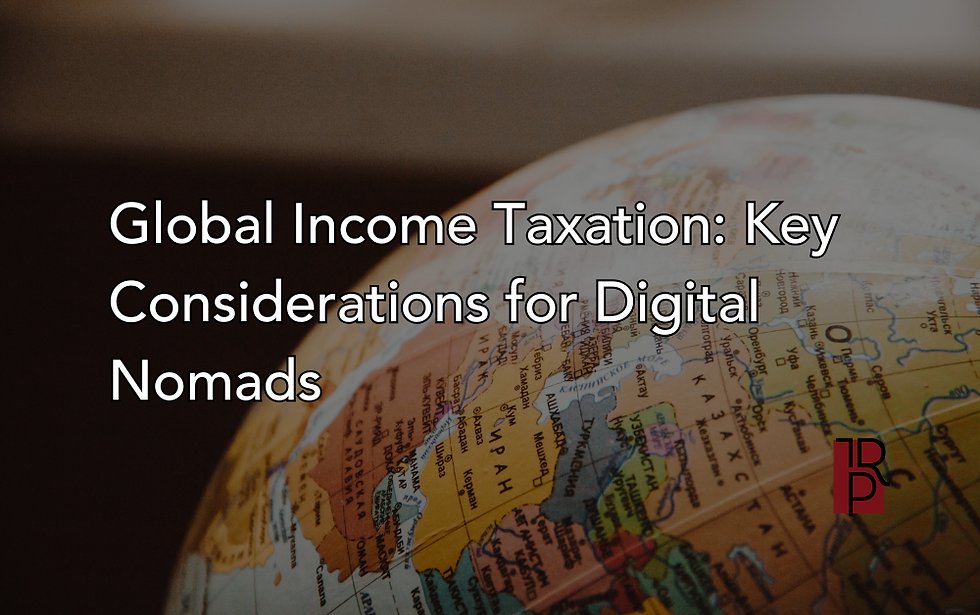Global Income Taxation: Key Considerations for Digital Nomads
- Thyani Rodrigues Puppio

- Mar 7
- 3 min read

Why is Global Income Taxation Important for Digital Nomads?
Globalization and technological advancements have allowed many professionals to become digital nomads, working remotely while exploring the world. However, one of the most complex challenges these professionals face is the taxation of their global income. Understanding tax obligations and how to minimize the tax burden is essential to avoid legal issues and ensure compliance with international laws.
The Concept of Global Income
Global income refers to earnings obtained from any part of the world. Depending on the tax rules of the taxpayer’s country of fiscal residence, this income may be subject to local taxation, regardless of where it was generated. Many countries apply the concept of “universal taxation,” meaning that their residents must declare and pay taxes on all income earned globally.
The Importance of Tax Residency
The concept of tax residency is crucial in determining where a digital nomad needs to pay taxes. Typically, tax residency is defined by the length of stay in a country, economic ties, or family connections. Some countries require that anyone who spends more than 183 days within their territory be considered a tax resident and, therefore, subject to local taxation.
Countries such as Portugal, Italy, and Spain offer special tax regimes to attract digital nomads and skilled professionals. On the other hand, countries like the United States apply global taxation even to citizens residing abroad.
Double Taxation Avoidance Agreements
To prevent the same income from being taxed in more than one country, international double taxation agreements exist. These treaties allow digital nomads to benefit from tax credits or exemptions, depending on their country of residence and where the income was earned.
It is essential to check whether the country where the digital nomad is a tax resident has agreements in place with the countries where they work and receive payments. Otherwise, they may have to pay taxes in more than one country.
Strategies to Minimize the Tax Burden
Digital nomads can adopt legal strategies to optimize their tax situation:
Choosing the country of tax residence: Opting for countries with favorable tax regimes can reduce the tax burden.
Using companies: Depending on the activity, setting up a company in a country with reduced taxation may be advantageous.
International tax planning: Consulting a specialist to structure income and avoid tax risks.
Considerations on the Nomadic Life and Taxation
Choosing a country of tax residence is not just about tax matters but also practical aspects of the nomadic lifestyle. Access to infrastructure, quality of life, and regulatory predictability are factors that can influence this decision. For many digital nomads, simplifying their tax obligations is an important step toward maintaining a sustainable and financially viable lifestyle.
Understanding tax rules and best practices for managing global income allows for greater security and predictability in financial planning. Seeking an efficient tax structure can provide greater freedom to continue exploring different destinations without compromising financial stability.
Conclusion
Global income taxation is a complex but essential topic for digital nomads. Understanding tax residency rules, double taxation avoidance agreements, and strategically planning the tax burden can make a significant difference in financial security. Moreover, adopting a structured approach to tax planning contributes to a more sustainable lifestyle, ensuring predictability and security in the long run.
If you are interested in professional legal services related to Tax Planning, our law firm specializes in this area. Feel free to contact us at contato@trpuppioadvocacia.com.br



Comments